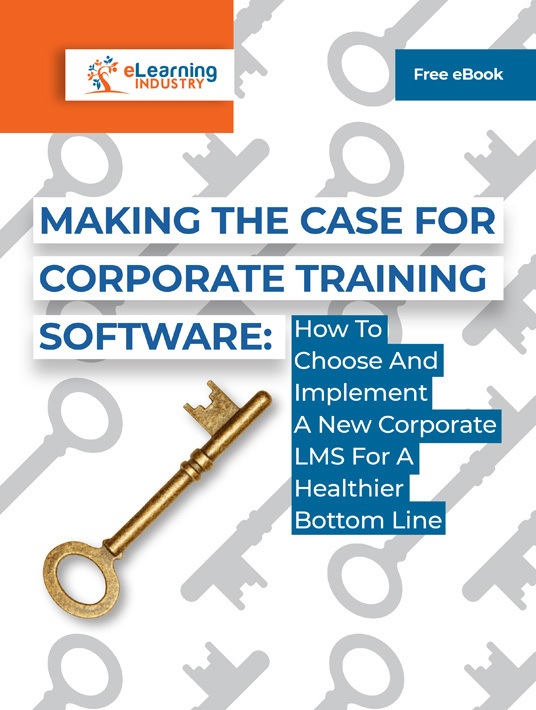Essential Features That Set The Best Corporate LMS Apart From The Rest
There’s a joke that Android users love their phones until they are able to afford an Apple device. That they don’t really like their Oreos and lollipops, they just settle and make the best of what they have. Sometimes, your LMS can feel like waiting for an iPhone, squirreling away for a fancier future. However, you don’t have to settle for sub-standard just because you’re working with limited resources. Regardless of your financial scope, how can you ensure what you’ve purchased is best in class? Below are some of the top features to look for that set the best corporate LMS apart from the rest.

1. Built-In Authoring
One of the primary functions of your LMS is to develop training materials. These could be product guides and instruction booklets for customers. All that stuff that goes on labels? Someone has to craft it, first. Or it could be comprehensive training courses for your staff. It might even be promotional materials for C-suite networking events. Your LMS requires the capacity to create this content, both from technical and laymen’s perspectives. You don’t want an LMS that requires three IT degrees just to log in. Look for the best corporate LMS that has built-in authoring tools. Including asset libraries, templates, and other crucial content creation features.
2. Content Diversity
Since this one LMS will be used to produce and deploy so much material it needs versatility. It functions as a training studio, staff portal, asset manager, customer relationship platform and more. Check that it has the necessary tools for all these purposes. For example, it needs video-audio tools for shooting and recording, uploading, editing, sharing and hosting or streaming. It should have some photo-editing tools, so you can tweak stock images and match them to your brand. Common action is changing a model’s clothes to fit your brand palette. Your LMS should be a mix of PhotoShop, iMovie, Word, and PowerPoint. But keep it simple enough to be used by a beginner who hasn’t specialized in those fields.
3. Tracking Options
Big Data has long proven its position in the corporate world. The best corporate LMS requires the ability to collect and analyze this data. You want it to take a deep dive into various aspects and allow you to generate relevant reports. If the function is automatic that’s even better. Apart from reviewing employee progress, you want the LMS to integrate the divergent assets of your business. It can, for instance, collate the assessment tests of your sales team. Then it can weigh them against their closing numbers, both before and after training. It could then create a report using this data, stating the exact success levels of your sales training course.
4. Ability To Upgrade And Scale
These days, there are so many movies made out of books that authors write cinematic stories from day one. Just by reading the tale, you can see it was created for screens, not paper. A well-written story translates well. Your LMS requires the same level of adaptability. It should scale, not just by volume, but also by tech. Your staff might buy the latest smartphones, or your favorite tech company may release a new kind of chip. If you want the best corporate LMS it must remain compatible or be feasibly upgraded to match new tech. And if the vendor is available for maintenance and back-end support, that’s even better. Of course, being able to add more users to accommodate your expanding workforce is also a must.
5. Interactive Tools
One of the biggest failures in LMS is passivity. This is software, not a print book. You want engagement faculties. A good model enables intra-organizational communication, from internal memos to customized social media. Bonus points if it integrates with public social networking platforms, Facebook, Twitter, WhatsApp, etc. Within training set-ups, it needs feedback options between learners and trainers. Alternate languages are useful too, both programming languages (like C#, QML) and human languages (French, Swahili, etc.) They allow IT departments and regular corporate learners to select the ‘tongue’ that suits them best.
6. Gamification Support
Your online training system needs to be able to engage employees and motivate them to do better. In a perfect world, intrinsic motivation would be enough. However, many employees require a little nudge to actively participate in training. Gamification not only inspires them to get involved and set their sights on the prize but allows you to track their progress. Employees who don’t earn the necessary badges can be offered support to bridge gaps and reach the finish line. While those who go above and beyond by earning more points than their peers can be identified as in-house mentors.
When an organization is shopping to find the best corporate LMS, they will generally focus on budget and testimonials. But these are far from the most important features. Besides, after you’ve settled those two criteria, you still have an ocean of courses to choose from. So how do you define excellence in LMS? It needs the ability to build courses, track performance, and adapt to the latest developments in tech. Vendor support is rare, so take it when you find it. The LMS should allow intra-organizational interaction and performance assessment on multiple levels. These include course tests, staff appraisal, equipment inspections, etc. It should also enable the creation, use, and storage of optimal content formats, from static to mobile.
Getting new hires into the flow of your work-place is an essential corporate undertaking. How can you be sure you get it right? Download our eBook Making The Case For Corporate Training Software: How To Choose And Implement A New Corporate LMS For A Healthier Bottom Line and discover all you need to know so you can choose and implement a new corporate LMS.








